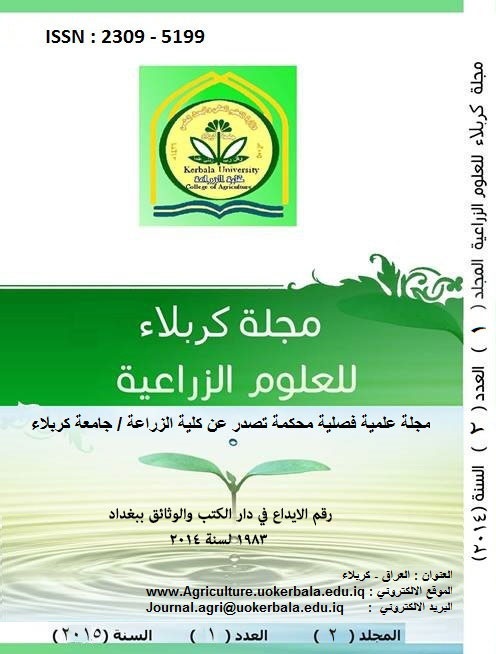E
DOI:
https://doi.org/10.59658/jkas.v2i1.459Abstract
Laboratory experiments were conducted to evaluate different concentration of Abate pesticides and Antrol biochemical from Bacillus thuringiensis israelensis on the mosquito Culex molestus (Diptera : Culicidae ) in Karbala region during 2014 the results showed : -
- Higher larval mortality reached 90% after 48 hours from treatment to all larval instars at all concentrations. While low larval mortality reached (90, 90, 85 and75)% to 1st , 2nd , 3rd and 4th larval instars respectively after 24 hours from treatment . The first instars larval was the more sensitive than larvae of mosquito.
- When different cosentration from Abate pesticides mixed with breeding water the larval mortality increased to (90 , 90 , 77,70 and 68,85 ) % on 1st , 2nd , 3rd and 4th larval instars respectively after24 hours from treatment and mortality increased with other cosentration ( 1.00 and 05 ml/ L) and with other periods ( 48 and 72 h ) of treatment . 1st and 2nd larval instars were the more sensitive than 3rd and 4th stage of mosquito to the pesticides .
- Both Abate pesticides and Antrol biochemical from Bacillus thuringiensis israelensis were equal in effectivnes on the mosquito Culex molestus .
Downloads
Published
How to Cite
Issue
Section
License
Copyright (c) 2015 Copyright (c) 2024 is the Author's article. Published by the Journal of Kerbala for Agricultural Sciences under a CC BY 4.0 license

This work is licensed under a Creative Commons Attribution 4.0 International License.
Licensing Terms
All articles are published under a Creative Commons License and will be directed to the Creative Commons Attribution 4.0 International License (CC BY 4.0) That permits use, distribution, and reproduction in any medium, provided the original work is properly cited. This license also allows the work to be used for commercial purposes.
Use by both non-commercial and commercial users
This content is licensed under a Creative Commons Attribution 4.0 International (CC BY 4.0) license, permitting use by both non-commercial and commercial users. Individual users may access, download, copy, display, and redistribute the articles to colleagues, as well as adapt, translate, and text- and data-mine the content, subject to the following conditions:
- The author's moral rights, including the right of attribution and the right to protect their work from derogatory treatment, are respected.
- Where content in the article is identified as belonging to a third party, users must ensure that any reuse complies with the copyright policies of the owner of that content.
- If the article content is reused for research or educational purposes, users should maintain a link to the appropriate bibliographic citation, including the DOI and a link to the published version on the journal's website.

